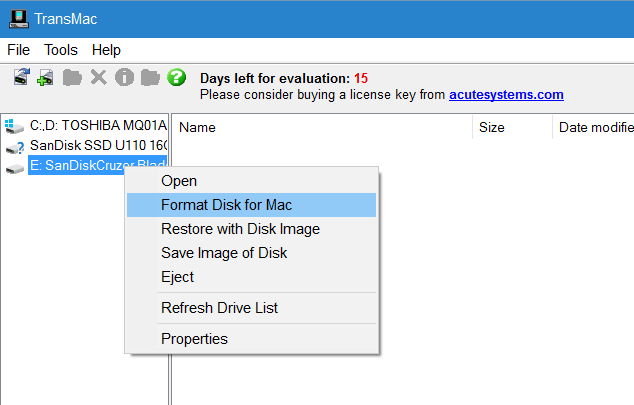
- #Burn dmg in os x 10.12.5 disk utility for mac#
- #Burn dmg in os x 10.12.5 disk utility mac os#
- #Burn dmg in os x 10.12.5 disk utility install#
- #Burn dmg in os x 10.12.5 disk utility manual#
- #Burn dmg in os x 10.12.5 disk utility free#
Create a disk image from a folder or connected device
#Burn dmg in os x 10.12.5 disk utility manual#
The disk image may not serve as a reliable backup.įor technical information about creating a restore disk image, see the Apple Software Restore (ASR) manual (man) page. Important: Don’t create a disk image of a disk that you believe to be failing or that contains corrupted information. When you use a master disk image to create other DVDs or CDs, all data is copied exactly. It includes a copy of all sectors of the disk image, whether they’re used or not. Read/write: Allows you to add files to the disk image after it’s created.ĭVD/CD master: Can be used with third-party apps. Read-only: The disk image can’t be written to, and is quicker to create and open.Ĭompressed: Compresses data, so the disk image is smaller than the original data. ”Ĭlick the Format pop-up menu, then choose an option: In the Disk Utility app on your Mac, select a disk, volume, or connected device in the sidebar.Ĭhoose File > New Image, then choose “Image from. You can then restore that disk image to another volume.
#Burn dmg in os x 10.12.5 disk utility free#
For example, if a USB device or volume is 80 GB with 10 GB of data, the disk image will be 80 GB in size and include data and free space. You can create a disk image that includes the data and free space on a physical disk or connected device, such as a USB device. In the Finder, copy your files to the mounted disk image, then eject it.įor more information about disk image types, see the manual (man) page for hdiutil.Ĭreate a disk image from a disk or connected device USB Drive: If you have a bootable USB installer with Windows, click USB Drive and connect the drive to the Mac.ĭisk Utility creates the disk image file where you saved it in the Finder and mounts its disk icon on your desktop and in the Finder sidebar. Once Windows is detected, click Continue. If this happens but you're sure that the operating system can be installed, click Continue, specify the OS type manually and follow the on-screen instructions.
:max_bytes(150000):strip_icc()/005_use-disk-utility-to-clone-macs-drive-4042367-5bc4e77946e0fb002698ce0b.jpg)
Note: Parallels Desktop may fail to detect some operating systems (ex. dmg file extension.ĭVD/CD master: Changes the size of the image to 177 MB (CD 8 cm). Read/write disk image: Allows you to add files to the disk image after it’s created. Sparse disk image: Creates an expandable file that shrinks and grows as needed. Sparse bundle disk image: Same as a sparse disk image (below), but the directory data for the image is stored differently. To encrypt the disk image, click the Encryption pop-up menu, then choose an encryption option.Ĭlick the Partitions pop-up menu, then choose a partition layout.Ĭlick the Image Format pop-up menu, then choose an option: If the disk image will be used with a Mac or Windows computer and is 32 GB or less, choose MS-DOS (FAT) if it’s over 32 GB, choose ExFAT.
#Burn dmg in os x 10.12.5 disk utility mac os#
If the disk image will be used with a Mac with macOS 10.12 or earlier, choose Mac OS Extended (Journaled) or Mac OS Extended (Case-sensitive, Journaled). If the disk image will be used with a Mac that has a solid state drive (SSD) and uses macOS 10.13 or later, choose APFS or APFS (Case-sensitive).

#Burn dmg in os x 10.12.5 disk utility install#
So if you have not yet installed the latest macOS 10.12.5 Update on your computer or laptop, then you must install now to experience all new features, functions, improvements, performance, bugs fixes, and security enhancements.Ĭlick the Format pop-up menu, then choose the format for the disk:
#Burn dmg in os x 10.12.5 disk utility for mac#
Apple has officially released macOS 10.12.5 Sierra (Build 16F73) update for Mac devices with iCloud 6.2.1 and iTunes 12.6.1 software updates as well. In the Size field, enter a size for the disk image.ĭownload install macos sierra 10.12.5 dmg. This is the name that appears on your desktop and in the Finder sidebar, after you open the disk image. In the Name field, enter the name for the disk image.
:max_bytes(150000):strip_icc()/DUDebug-5a722f208023b90037856ee9.jpg)
This is the name that appears in the Finder, where you save the disk image file before opening it. In the Disk Utility app on your Mac, choose File > New Image > Blank Image.Įnter a filename for the disk image, add tags if necessary, then choose where to save it. You can create an empty disk image, add data to it, then use it to create disks, CDs, or DVDs. Note: You can burn information to a CD or DVD using the Burn command in the Finder. You can use Disk Utility to create a disk image, which is a file that contains other files and folders. Modifying this control will update this page automatically Create Dmg With Background Image Software Disk Utility User Guide


 0 kommentar(er)
0 kommentar(er)
